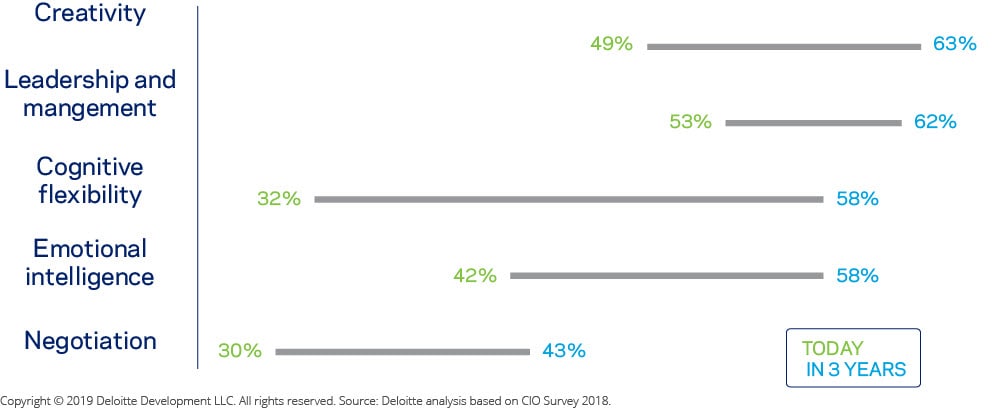Issues for CIOs: Why being a 'softie' is a good thing has been saved

Perspectives
Issues for CIOs: Why being a 'softie' is a good thing
The non-technical skills most valued by TMT CIOs
As technology quickly evolves, chief information officers (CIOs) are struggling to find the right information technology (IT) talent. Technical skills are critical, but non-technical skills are becoming increasingly important. These “soft skills” can help drive innovation and provide competitive differentiation.
More and more, CIOs seek these soft skills for their teams

Finding great talent with the right skills has always proved challenging for CIOs. Yet it can be even more difficult as new technologies emerge and CIOs’ responsibilities multiply.1 In fact, International Data Corporation (IDC) predicts 30 percent of the global demand for talent with emerging technology skills will be left unfilled over the next few years.2 Why is it so hard? It’s not just technical skills that are needed, but soft skills as well. In our 2018 global CIO survey, technology, media, and telecom (TMT) CIOs named cognitive flexibility, emotional intelligence, creativity, and negotiation as the soft skills whose importance will increase the most over the next three years.3
Today’s rapidly evolving business and technology landscape often requires IT teams with cognitive flexibility—future-proofed, with the ability to constantly adjust to new technologies and operating models. Emotional intelligence can also be essential to driving a successful innovation agenda by effectively managing relationships, building consensus, and having empathy. Creativity is a constant need, and TMT CIOs surveyed highly value negotiation skills. These skills can be crucial when working with other leaders on strategic issues, participating in ecosystems, developing partnerships, and consulting with vendors, such as cloud service providers.
These non-technical skills may become even more important as artificial intelligence (AI) gains widespread adoption. Almost two-thirds of respondents to our 2018 Global Human Capital Trends survey identified the criticality of complex problem-solving skills as AI is integrated into the enterprise, followed closely by cognitive abilities, process skills, and social skills.4
So how will TMT CIOs find the skilled team members they need? Leaders tell us they are using a variety of methods to reshape their IT workforces, including retraining existing talent (55 percent), hiring experienced talent (52 percent), and leveraging talent from external partnerships/service providers (51 percent). It’s a solid, traditional approach, but it may not be enough. To ensure a strong supply of “softies,” they should also consider dedicated training programs, more formal opportunities to develop interpersonal skills, mentorships, and rotational assignments into business units.
This charticle authored by David Jarvis on March 13, 2019.
2018 global CIO survey
Manifesting legacy—looking beyond the digital era
Today’s successful organizations—and their CIOs—are adopting a technology-led, business-enabled mindset to drive transformation, growth, and revenue. Based on insights from more than 1,400 global executives across 23 industries, we highlight how digital vanguards are leading compared with baseline companies and the ways that technology leaders can pivot to successfully lead their organizations—and their people—into the future.

Endnotes
1 “It Is the year of more for CIOs: Pay, workload and influence are on the rise,” The Wall Street Journal, February 25, 2019.
2 “IDC Reveals Worldwide CIO Agenda 2019 Predictions,” IDC, October 31, 2018.
3 Insights from Deloitte 2018 global CIO survey.
4 Insights from Deloitte 2018 Global Human Capital Trends Survey.
Recommendations
Cybersecurity as a growth engine
The case of artificial intelligence and cybersecurity



